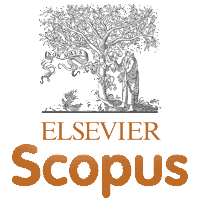ADVANCING PADDY LEAF DISEASE PREDICTION: INTEGRATING HYBRID ALGORITHMS AND DEEP LEARNING FOR ENHANCED AGRICULTURAL SUSTAINABILITY
Abstract
Background: Paddy Leaf Disease (PLDs) pose significant threats to global rice production, impacting crop yield and food security. Early and accurate detection of these diseases is crucial for timely intervention and effective disease management strategies.Objectives: This study aims to develop and evaluate a novel framework for PLD prediction using advanced image processing techniques and machine learning algorithms. Specific objectives include enhancing disease detection accuracy, exploring the effectiveness of hybrid algorithms combining denoising techniques and Deep learning (DL) models, and assessing the practical implications for agricultural sustainability.Methods: Images of paddy leaves are captured using IP web cameras and processed using denoising algorithms such as Multiscale Retinex and Robust Retinex to improve image quality and highlight disease symptoms.Optimization algorithms like Discrete Particle Swarm Optimization (DPSO) and Fractional Order Discrete Particle Swarm Optimization (FODPSO) are utilized for feature selection and parameter tuning, enhancing the input data for disease classification models.A Convolutional Neural Network (CNN) augmented with Local Interpretable Model-agnostic Explanations (LIME) is trained on labeled datasets to predict and classify PLDs based on extracted features.Performance metrics including accuracy, precision, and recall are employed to validate the proposed framework's effectiveness in disease prediction compared to traditional methods.The hybrid algorithm, FODPSO combined with CNN_LIME, achieves 99% accuracy in predicting PLDs. This approach not only outperforms traditional methods but also provides interpretable insights into disease classification decisions.Significance: The study's findings contribute to advancing agricultural technology by offering a robust and efficient solution for early disease detection in paddy cultivation. By minimizing crop losses and optimizing pesticide use, the proposed framework promotes sustainable agricultural practices and enhances food security.Conclusion: In conclusion, the integration of advanced image processing, optimization techniques, and DL models proves instrumental in improving the accuracy and efficiency of PLD prediction. The success of the FODPSO+CNN_LIME hybrid algorithm underscores its potential to revolutionize disease management practices in rice agriculture, paving the way for future research and applications in precision farming.





